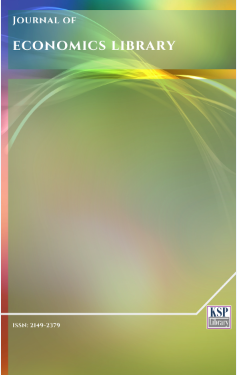International trade policies: An evolutionary perspective
Abstract
Abctract. Cross-border trade has had a long history. It has enriched the lives of trading partners since the rise of ancient civilizations although it was the cause of some conflicts and even wars among trading partners; and between empires, colonies, and nation-states. It has increased cooperation due to harmony of interest between buyers and sellers, but occasionally has intensified rivalry, power-playing, destructive hegemonic impulses and cut- throat competition among neighbors. However, the fact that it has grown steadily through the centuries indicates that its impact on trading partners, near or distant, has been more positive than negative. One indicator of its growth, particularly in recent centuries and decades, is its size as a percentage of total world output. For example, exports, which constituted less than 5% of world GDP until the 1870s, grew to over 17% of world GDP by 1998, according to the World Bank, OECD, and WTO. This paper explores the rise of trade and changes in trade policies from the time of ancient civilizations to the present. It also examines some old and some recent trade disputes/wars. It adds to the literature by providing an overview of the foreign trade environment as well as trade patterns from different perspectives, particularly the perspectives of high versus low wage countries, the North versus the South.
Keywords. Free trade, Mercantilism, Protectionism, Balance of trade, Tariffs, WTO, Trade war.
JEL. F10, F11, F13.Keywords
References
Abdul-Hye, M.D. (2017). Mercantilism: An economic school of thought of the early-modern era. Scholars Journal of Economics, Business and Management, 4(5), 328-330. doi. 10.21276/sjebm
Altman, S. (2019). Five myths: Globalization. The Washington Post, January 27, B3.
Amadeo, K. (2018). International trade, its pros, cons, and effect on the economy. The Balance. June 11. [Retrieved from].
Barkham, P. (1999). The Guardian. March 5. [Retrieved from].
Beattie, A. (2015). The history of money: From barter to banknotes. December 29. [Retrieved from].
Cavusgil, S.T. (1993). Globalization of markets and its impact on domestic institutions. Indiana Journal of Global Legal Studies, 1(1), 83-99.
Emmer, P.C. (2018). Review of the rise of commercial empires: England and the Netherlands in the age of Mercantilism – 1650-1770. Review #345. [Retrieved from].
Estevadeordal, A., Franz, B., & Taylor, A. (2002). The rise and fall of World trade, 1870-1939. NBER Working Paper, No.9318. doi. 10.3386/w9318
Evans, S, (2018). Trade wars don’t have a good track record. History news network. Columbia College of Arts and Sciences, George Washington University. August 4, [Retrieved from].
Hankia, C. (2018). What history teaches us about who wins in trade wars. Market Watch. April 4, [Retrieved from].
History of Trade. (n.d.). [Retrieved from]; [Retrieved from]; [Retrieved from].
International Division Staff. (n.d.). History of foreign trade until the 20th Century. World Encyclopedia of Law. [Retrieved from].
Jimenez, J. et al., (2018). Trade. Bloomberg Businessweek, November 5, p.31-43.
Krugman, P. (1995). Growing World trade: Causes and consequences. Brookings Papers on Economic Activity, 26(1), 327-347.
Krugman, P. (2018). A Trade War primer. The New York Times. June 3, [Retrieved from].
Manning, R. (2018). Will Global trade survive 2018? Foreign Policy. January 5, [Retrieved from].
Mayeda, A. & Baschuk , B. (2018). Trade War. Bloomberg Quick Take, Issue 9.
Merlinlinehan, A. (2018). Five great trade routes from history. February 24. [Retrieved from].
Newfarmer, R. & Sztajerowska, M. (2012). Trade and employment in a fast changing World. In OECD’s Policy Priorities for International Trade and Jobs (in collaboration with the Institute on Trade and Employment), p.1-70.
OECD. (2012). Trade and Employment. [Retrieved from].
Oppenheimer, F. (2012). Barter in Prehistoric Times. MISES Institute. February 15, [Retrieved from].
Ortiz-Ospina, E. & Roser, M. (2018). International trade. Our World in data, Oxford University. [Retrieved from]. and Trade and globalization. [Retrieved from].
Priyadarshi, S. (2015). South-South trade and its implications for the World economy. International Bankers Newsletter, A Publication of Finance Publishing Limited.
Staff (2017). What is the significance of the Silk Road in ancient China? Historyplex. July 28, [Retrieved from].
Stewart, J. (2018). What history has to say about the winners in Trade Wars, The New York Times. March 8, [Retrieved from].
SUNY Levin Institute. (2016). Changing composition of trade: Globalization 101. State University of New York.
Teeboom, L. (2018). Negative Effects of Trade. [Retrieved from].
The World Bank Group (2018). Exports as a percentage of GDP. World Bank Open Data.
Walter, R. (n.d.). Economic relations between Europe and the World: Dependence and independence. European History Online. [Retrieved from].
World Trade Organization (WTO). The GATT Years: From Havana to Marrakesh. [Retrieved from].
World Trade Organization. (2016). Trade growth to remain subdued in 2016 as uncertainties weigh on Global demand. WTO 2016 Press Releases, April 7, p.1-21.
World Trade Organization. (2013). Trends in international trade. World Trade Report 2013. [Retrieved from].DOI: http://dx.doi.org/10.1453/jel.v6i1.1842
Refbacks
- There are currently no refbacks.
.......................................................................................................................................................................................................................................................................................................................................
Journal of Economics Library - J. Econ. Lib. - JEL - www.kspjournals.org
ISSN: 2149-2379
Editor: [email protected] Secretarial: [email protected] Istanbul - Turkey.
Copyright © KSP Library

